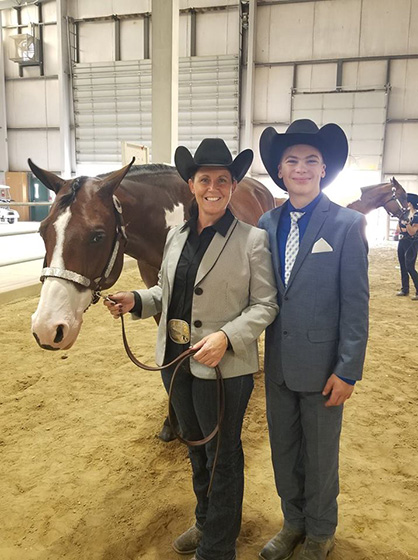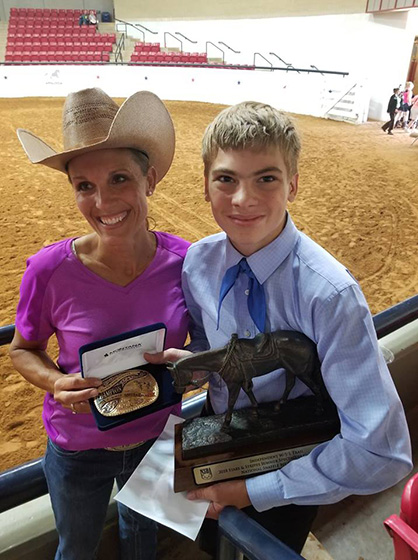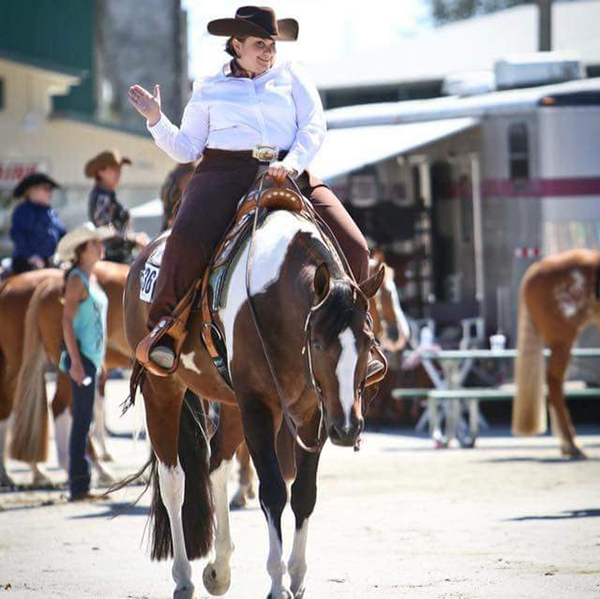We Are the Same- Building Disability Awareness in the Equestrian Industry

The young man pictured is Hunter Dulin. He is a disabled exhibitor with APHA. His family is working to increase awareness within APHA’s Zone One regional area.
EC Blog by: Kory Kumar
Most breed organizations have programs for riders with disabilities, but these programs shouldn’t be the only factor contributing to a global understanding and acceptance of disability awareness within the equestrian industry. Our community of equestrians is comprised of all manner of people, who have varying levels of support needs. The absence of a disability at first glance doesn’t mean that there’s no disability present. There are many of us who are struggling in a variety of ways, each and every time we step our foot into the stirrup of the saddle.
Within the United States alone, there are 48.9 million people who have a classified disability. Of this group, 24.1 million are classified as having a severe disability and 34.2 million are classified as having a functional impairment. Within this sub-group of America’s overall population, it’s estimated that 3.4 million people participate in equestrian activities.
Building disability awareness within the equestrian industry means that we adopt principles of inclusion and make them part of our personal beliefs. It’s not enough to just engage in conversation about equestrians with disabilities, but rather, we must highlight the riding experiences and success of everyone who engages in our sport, regardless of the presence of a disability. We are, after all, a diverse community of individuals.
Equestrians with disabilities are meaningful and contributing members of our equine industry. The Riding for the Disabled Association (RDA) says it’s what you CAN do that counts. Their program is based upon the following basic principles:
- to provide opportunities for individuals to reach therapeutic goals
- to achieve personal ambitions
- to combat social isolation
- to develop life skills
- to experience the outdoors
- to connect with animals.
As I read over this list, I’m struck by the fact that these are the same goals that most competitive equestrians have. The key word is same. We are more alike than we are different.

Riders with and without disabilities experience tremendous benefits from equestrian activities. The RDA states that when people with disabilities engage in equestrian sports, 80% demonstrate physical improvement, greater confidence, and more enjoyment. 75% show a greater willingness to communicate. 82% demonstrate improved relationship building skills. 83% demonstrate clear advances in horsemanship. Again, these statistics represent the same type of outcomes most equestrians have. Let’s be real. How many of us struggle to relate to non-horsey people? How many of us feel like our “families” of horse people are the ones who understand and relate to us the best? How many of us welcome and feel excitement about spending time with our fellow equestrians, both as part of competition, and outside of it?
The truth is that we’re all the same. The healthy development of children, adolescents, and adults requires participation in regular physical activity and active play. Regular physical activity does wonderful things for a person’s overall well being. According to Therapy Today, (2017), ongoing and routine equestrian activities have been documented to have a positive and lasting psychosocial impact upon people.
My point is simple. As equestrians, and people in general, we’re more alike than we are different. There is a great deal more that make us the same than divide us into different categories of equestrian enthusiasts. The horses are center piece that binds us all together, but it is the individual equestrians, that come together in all their combinations, that make this community awesome and sustainable. It’s the ultimate goal of all equestrian industry to create equine experiences in which the participants want to remain in the sport throughout their lives, while achieving their personal sport goals and developing equestrian literacy in order to achieve high performance engagement in riding or in competition.
As you reflect upon your own personal successes and struggles, please take a few moments to expand your thoughts to the rest of our great industry. It’s easy to get stuck in thinking about our personal core groups within the larger whole. What can you do to increase awareness of all equestrians? What can you do to increase awareness of specific equestrians? What can you do to increase awareness and acceptance of people who you have only just begun to realize are more similar to you than you previously thought?
~Kory Kumar
If you’d like to write a blog post for EquineChronicle.com about a topic of interest to you in the equine industry, email B.Bevis@EquineChronicle.com.











